Artificial shelters
Artificial shelters can provide essential cover on the range, especially when you are waiting for saplings and other vegetation to become established. Artifical shelters range from custom made shelters to old pieces of farm equipment. As long as they provide cover for the hens they will help to draw them out of the house.
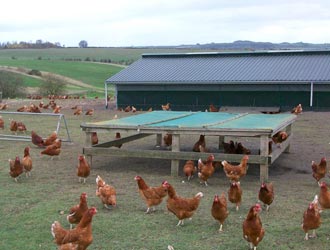 |
|
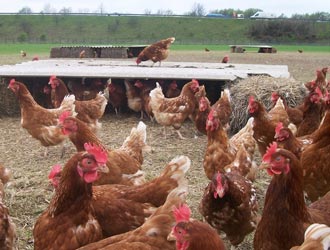 |
|
Shelters can be made from a simple wooden structure and covered with a variety of materials such as corrugated iron, wood or tough fabrics.
|
Here straw bales with corrugated iron roof are being used as simple, cheap and effective shelters.
|
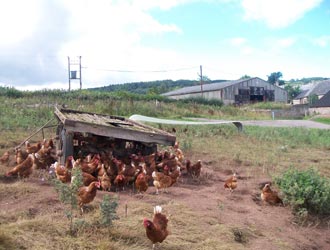 |
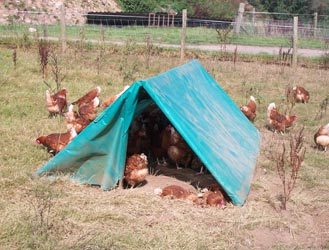 |
|
Old pieces of farm equipment can make great shelters, just ensure they are raised off the ground to prevent attracting vermin.
|
This tent design keeps the area underneath the shelter very dry and makes an excellent dust bathing area.
|
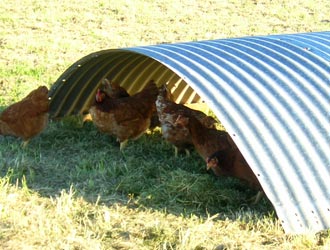 |
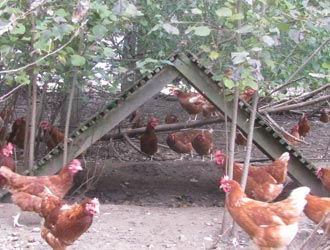 |
|
Curved, corrugated iron make simple, but effective shelters that can be easily moved.
|
Old slats and wooden pallets can also be used to construct shelters. Cover the outside of the slats or pallets with plywood or a suitable solid material to give the birds better protection from elements.
|
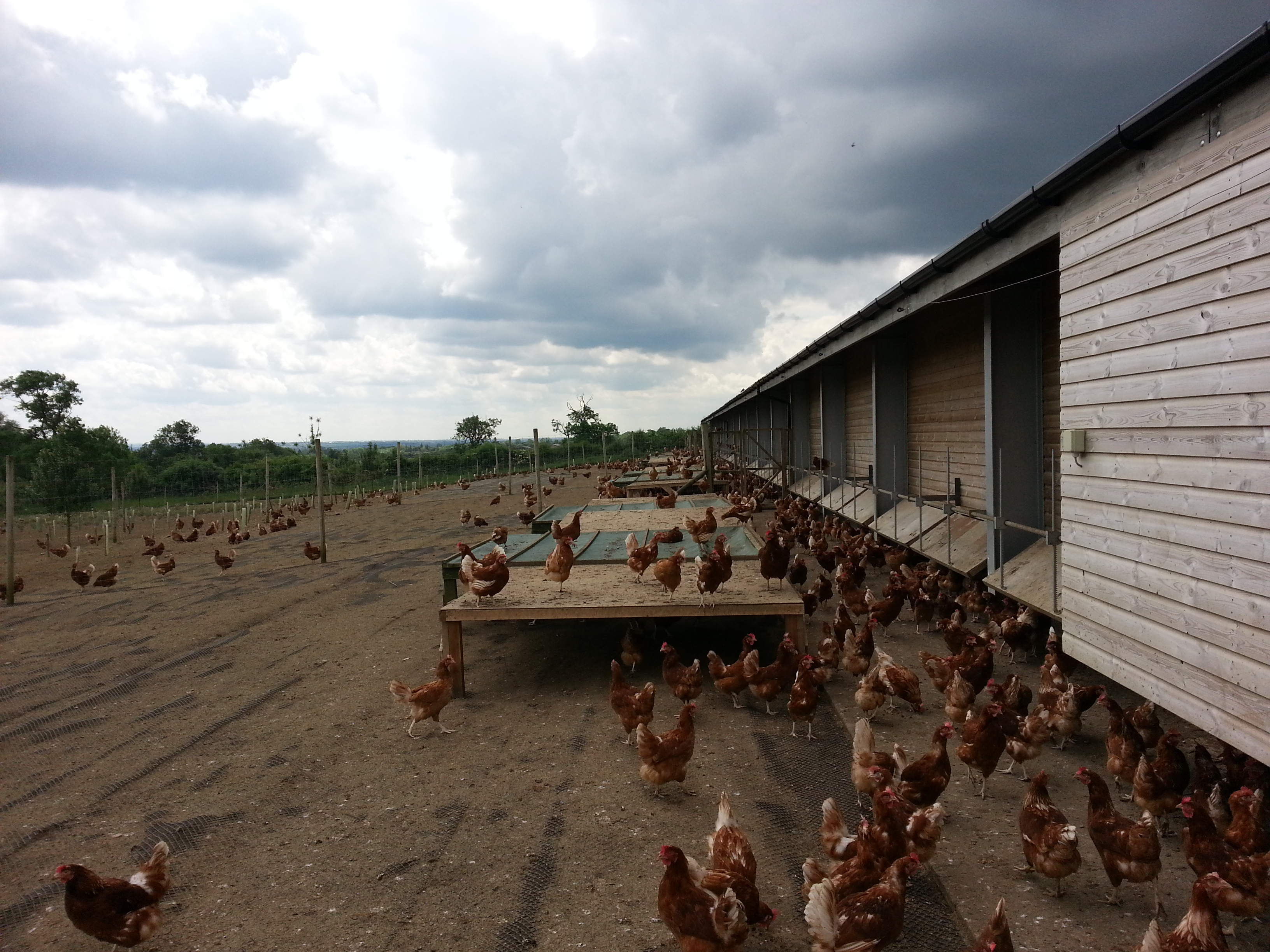
|
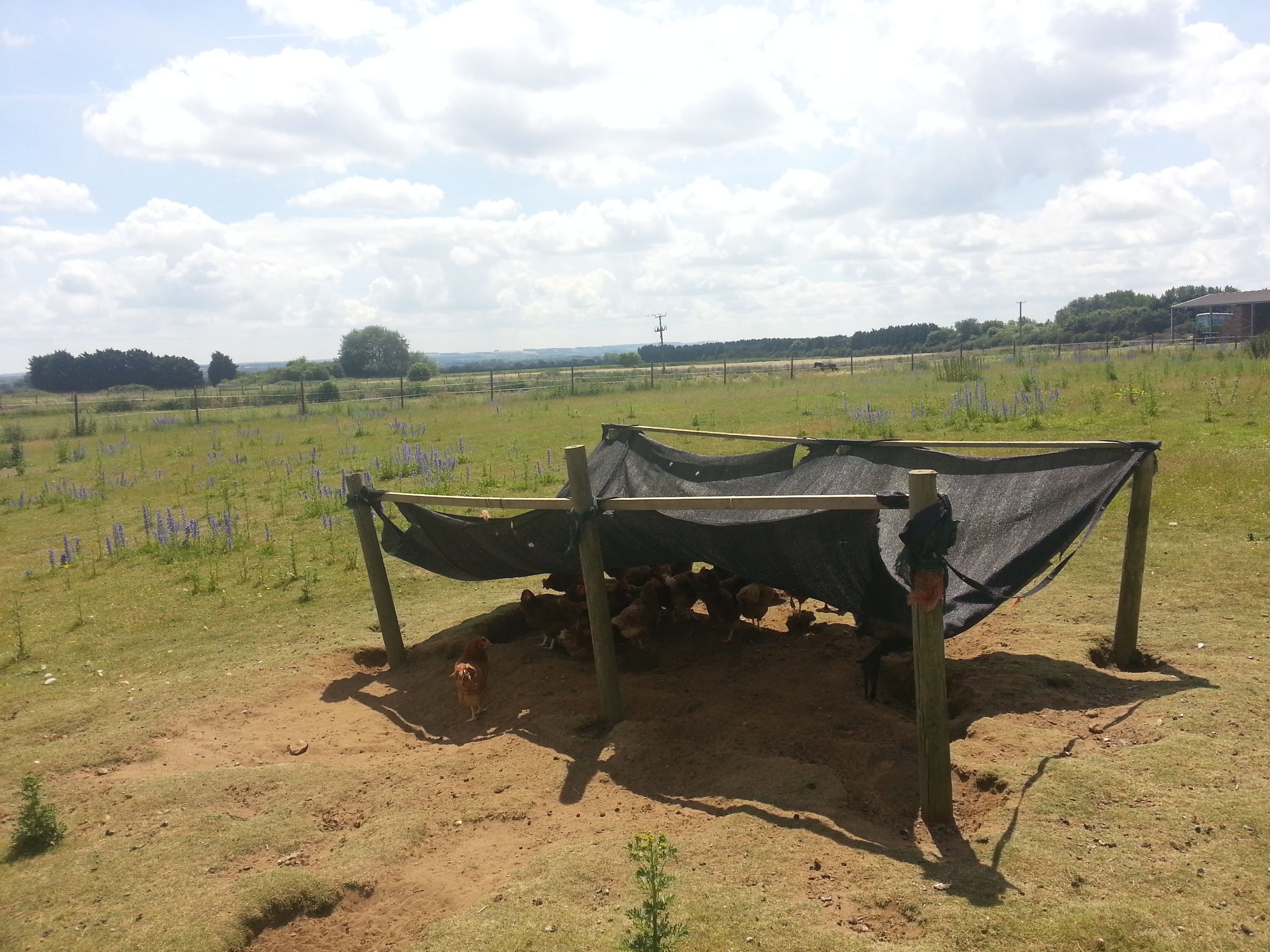
|
|
Moving shelters close to the popholes is an effective method of encouraging the birds out, particularly when the birds are first given access to the range.
|
Shelters are particularly important in providing shade on hot days and help to increase the number of birds ranging on sunny days.
|